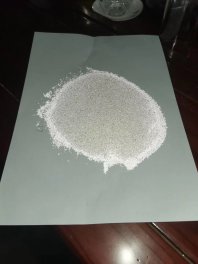
For an effective thermoplastic pavement marking replacement strategy, the rate at which the marking’s retro-reflectivity deteriorates in service must be well established in order to avoid re-stripping that is too soon or too late. Against this background, this paper undertook a review of models that deal with degradation of thermoplastic pavement markings under different traffic and environmental conditions in order to establish service life and the terminal retro-reflectivity levels that have informed re-striping. Service life in the context of this paper is the time taken for a newly-installed marking to degrade to some minimum retro-reflectivity level below which motorists would find it difficult to navigate on the carriageway under night-time and poor visibility conditions. It was established that the minimum retro-reflectivity requiring re-stripping intervention reported varied, although commonly-adopted values tended to range from 50 mcd/m2 /lx to 150 mcd/m2 /lx. A number of empirical models, based on site specific conditions, have been developed by researchers using field data, to estimate marking retro-reflectivity at any time since placement. Whereas some of the models used time as the only independent variable, others used a combination of time, traffic level and a few other parameters to estimate retro-reflectivity. Even though degradation of marking retro-reflectivity is a reflection, among other things of material degeneration impacted by environmental and service conditions, almost all the models reviewed failed to consider environmental factors. Additionally, for some of the models, non-inclusion of the initial retro-reflectivity level and their generally low coefficient of determination statistic erode the confidence in their reliability.
Degradation, Re-Striping, Retro-Reflectivity, Service Life, Thermoplastic Pavement Marking
-
Introduction
Retro-reflective pavement markings are used as key visual elements to guide motorists when roadway visibility is compromised by night-time and adverse weatherconditions in order to help drivers keep their position on the carriageway and avoid lane departure accidents. The ability of pavement markings to retro-reflect headlamp illumination begins to decline following marking installation due to several factors that operate within the service environment and, with time, may be lost completely. Factors that cause deterioration in marking retro-reflectivity are varied but may include bead loss, loss of base material due to chipping and abrasion, deposition of detritus on the marking, discoloration of paint material and loss of contrast between the base material and its surrounding . In order that they will continue to provide navigation guidance to motorists, pavement markings should be scheduled for maintenance when they reach some minimum threshold in retro-reflectivity . This pre-supposes that the Transportation Department or Road Agency concerned has information about the minimum retro-reflectivity level found acceptable to motorists within its area of jurisdiction and that a methodology exists for establishing the service life of the marking so as to avoid replacement that is too soon or too late. In the context of this paper, service life is the time taken by a newly-placed thermoplastic pavement marking to degrade to a pre-determined minimum retro-reflectivity level below which motorists would find it difficult to navigate on the carriageway under night-time and poor visibility conditions . -
。
To improve road safety in the United States, the Federal Highway Administration (FHWA) has proposed updates to minimum retro-reflectivity values in the Manual on Uniform Traffic Control Devices (MUTCD) that set 50 mcd/m2/lx and 100 mcd/m2/lx for posted speed limits of 35 mi/h (56.4 km/h) or greater and 70 mi/h (112.7 km/h) or greater, respectively . In some transportation jurisdictions, for example , markings having retro-reflectivity levels less than 60 mcd/m2/lx are considered bad and require immediate renewal and in Ghana, Salifu and Owusu established a minimum standard of 150 mcd/m2/lx for highways in the country based on subjective ratings of markings by drivers during nighttime driving.
3. Empirical Marking Degradation Models
 English
English Chinese
Chinese Русский
Русский Español
Español العربية
العربية
